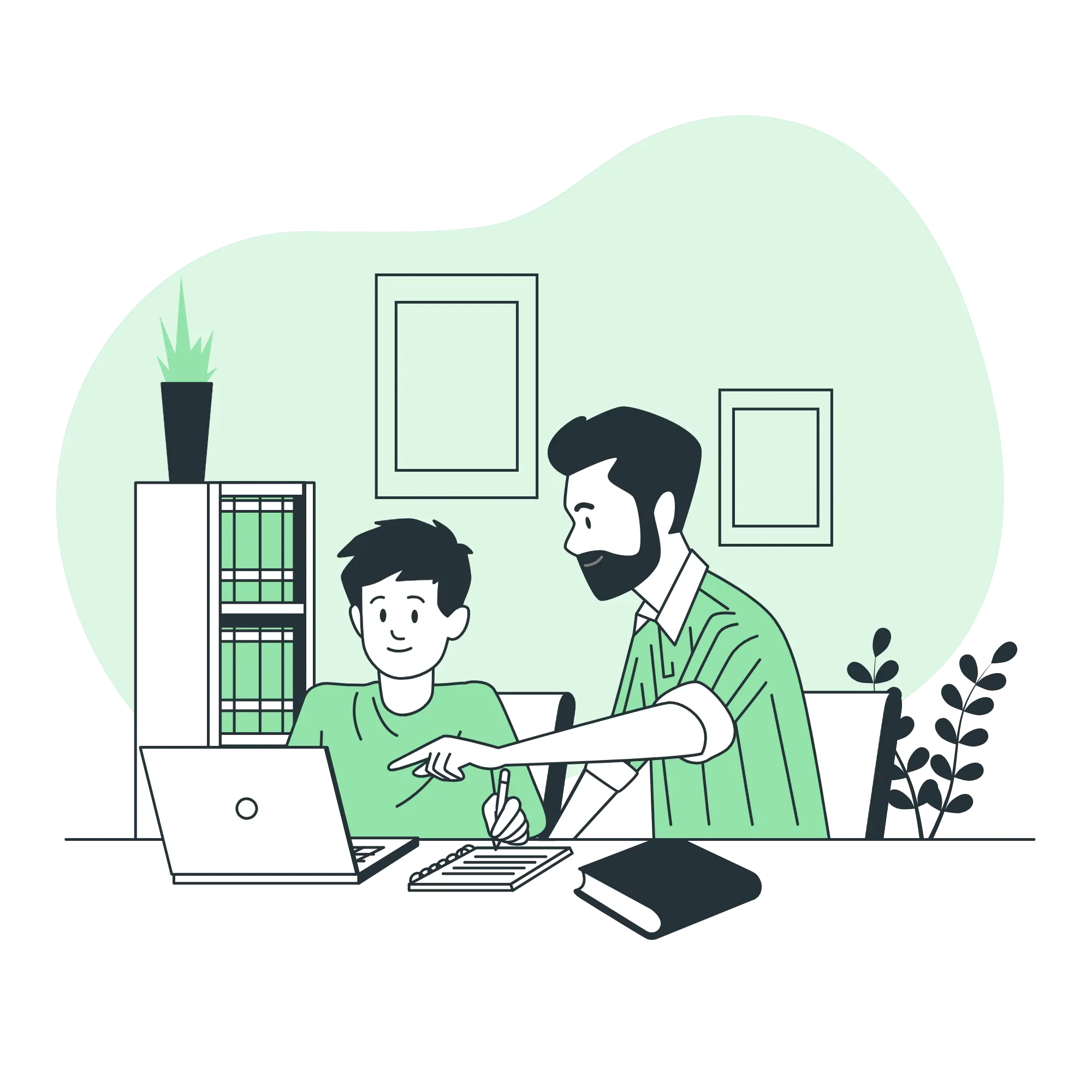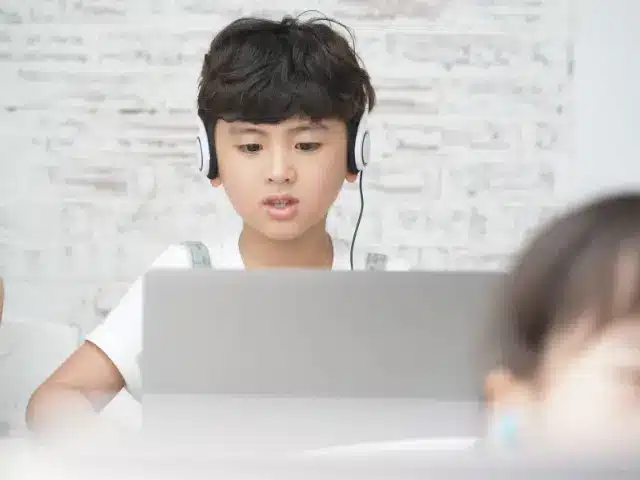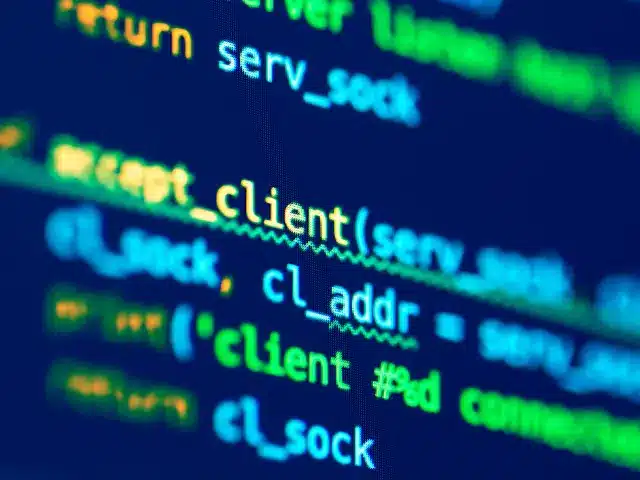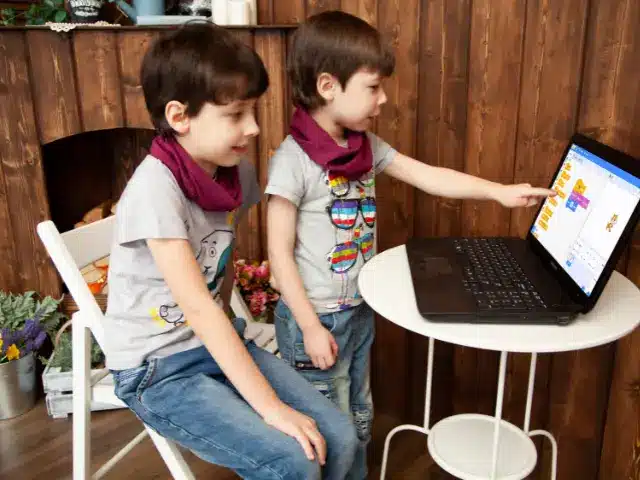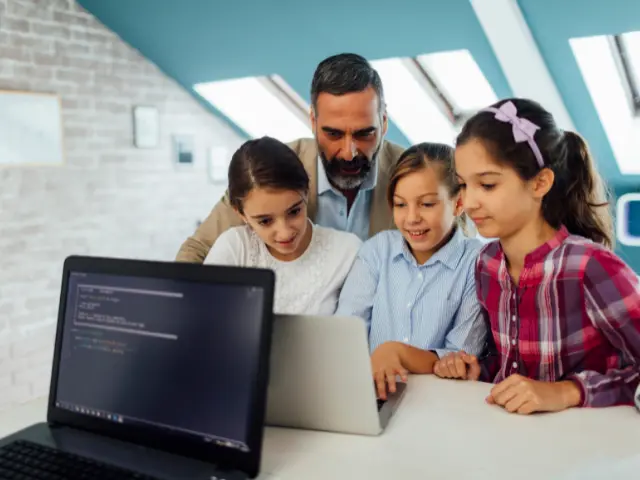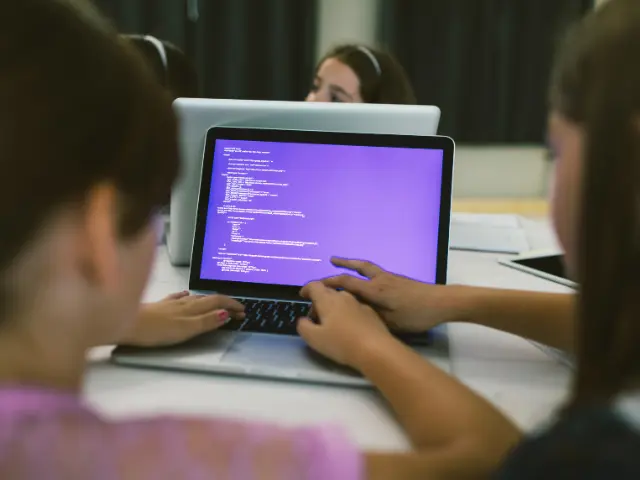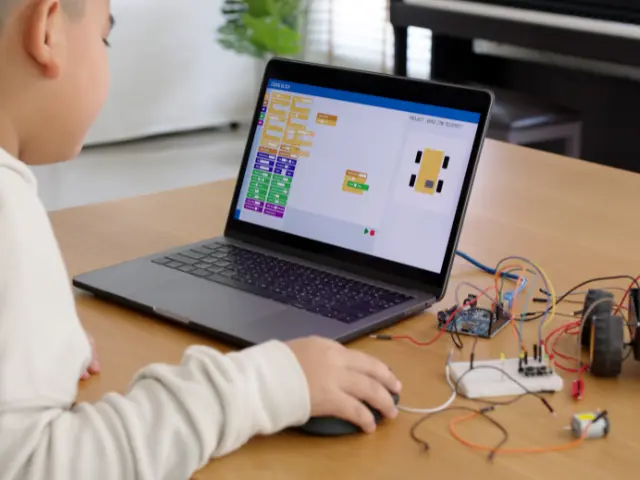Coding is a valuable skill for children to learn in an increasingly digital society. Beyond developing computational thinking and problem-solving abilities, which become more valuable as they grow, coding can be a bridge that will lead your kids to endless creative possibilities and future opportunities in the digital space.
As a parent, you might be wondering if kids can even grasp the concept of programming or how, if it’s possible at all, to teach them all of it? Well, we’re not only going to answer that question, we’ll also give you tips on how you can teach kids how to code using free resources!
For information on tutoring for English, tutoring for Maths, read here.
What is Coding in Simple Words?
Coding, put simply, is a series or set of instructions for computers to follow. It utilises a programming language, which is comparable to our own language in some aspects. Through coding, we are able to develop websites, applications and other various software by guiding the computer what to do step by step.
Why Should Kids Learn Coding?
Kids who code can develop a better grasp of mathematical concepts as well as problem-solving and social skills at an early age. Being skilled in coding concepts don’t simply fuel what a child can do on the computer screen, but also what goes beyond it.
Will kids benefit from studying programming languages? Yes, absolutely. Computer science and programming invite plenty of opportunities to develop critical thinking skills and creativity in children—both important to your child’s growth and future.
Understanding programming language and other computer science principles allows children to go past just knowing how to use technology. It empowers them to imagine and possibly create technologies for the future.
Is it Hard for Kids to Learn Code?
Coding is challenging. But that’s exactly why children with coding skills earn a unique advantage. Aside from developing problem-solving skills and digital literacy ahead of their peers, the learning path itself opens up future job opportunities should they pursue advanced coding classes.
While it’s fairly difficult to learn programming languages from scratch, those who start young have more space to learn at their own pace. The kids also get to learn collaboration and communication skills much earlier and become more comfortable sharing ideas and making decisions as they advance.
Younger children may find some coding languages and concepts more difficult to grasp due to their cognitive development or age and experience level. Fortunately, there are many coding activities and tools from various coding platforms specifically designed for kids. Thus, making it more accessible to introduce children to the basic concepts of computer programming.
What’s the Best Language to Start Coding for Kids?
The ideal coding language for kids depends on various factors, including their age and learning goals. With that in mind, here are some popular programming languages that are best for beginners:
Scratch
Scratch is a visual programming language developed by MIT specifically for children. It uses colourful blocks that snap together to create animations, games and interactive stories. Thus, it’s often referred to as block-based coding.
Overall, Scratch is indisputably the best choice for introducing kids to programming concepts in a fun and intuitive way. According to its official website, the Scratch programming language is appropriate for children aged 8 to 16, though a simplified version is also available for kids aged 5 to 7.
Blockly
Blockly is another visual programming language that utilises blocks to create code. It offers more flexibility compared to Scratch and can be used to generate code in multiple programming languages, including advanced syntax such JavaScript, Python and PHP.
Given its scalability, Blockly is best suited for individuals of all ages who enjoy block-based programming but are also interested and prepared to explore advanced concepts.
Python
Python is a versatile and beginner-friendly text-based programming language known for its readability and simplicity. It’s widely used in various fields, including data science, web development and artificial intelligence.
Since it’s widely used by both beginners and more advanced coders, Python is backed by a large community and extensive resources, making it easier to find coding platforms that has intuitive lessons and tools tailored for young learners.
Where Can Your Child Learn How to Code Free?
Given the resources available across the internet, it’s very much possible to teach kids the basic concepts of programming at home. To get started, here are some of the best coding platforms where your child can learn coding skills for free:
Code.org
Format: Online platform with interactive tutorials, games, and projects.
Suitable for age: Varied, with courses available for children as young as kindergarten age.
Scratch
Format: Visual programming language and online community for creating animations, games, and interactive stories.
Suitable for age: Generally recommended for ages 8 and up.
ScratchJr
Format: Simplified version of Scratch designed for younger children, available as a mobile app.
Suitable for age: Preschool and early elementary school children.
Gamestar Mechanic
Format: Game-based platform for learning game design and programming concepts.
Suitable for age: Elementary and middle school students.
Code for Life
Format: Educational platform with interactive games and challenges to learn coding concepts.
Suitable for age: Elementary and middle school children.
Blockly Games
Format: Series of educational games using Blockly, teaching programming concepts.
Suitable for age: Varied, with games for different skill levels.
Codewars
Format: Online platform for practicing coding skills through challenges and exercises.
Suitable for age: Teens and older children with some coding experience.
Code Maven
Format: Interactive tutorial for learning programming concepts through coding exercises.
Suitable for age: Middle school and up.
Codingame
Format: Platform for learning and practicing coding skills through game-based challenges.
Suitable for age: Teens and older children with some coding experience.
Khan Academy – Intro to Programming
Format: Online tutorials and exercises covering basic programming concepts.
Suitable for age: Middle school and up.
Code Monster
Format: Interactive introduction to JavaScript programming for beginners.
Suitable for age: Elementary and middle school children.
Coding for Kids FAQ:
What Age Should a Child Start Coding?
For very young children (ages 5 to 7), visual programming languages like Scratch Junior or Blockly Games can be excellent starting points. These block-based coding platforms use colorful blocks and a simple, intuitive interface to introduce fundamental coding concepts in an engaging and child-friendly manner.
As they grow older (ages 8 to 12), children can take advanced coding lessons in coding platforms that use Scratch, Python or JavaScript. These programming languages are highly recommended since they offer greater flexibility and allow children to create their own games, animations, interactive stories and other digital outputs.
How Do I Start Coding As a Child?
Starting to code as a child can be a fun and exciting journey. To start, choose a beginner-friendly coding platform and language such as Scratch or Python. These languages are flexible and have plenty of resources that can scale with your age and experience level.
You can start by studying fundamental coding concepts such as sequencing, loops and variables. Once you have a solid foundation, you can experiment with creating simple animations, interactive stories and games using Scratch’s drag-and-drop interface.
Follow tutorials and projects that meet your interests, and maximise the opportunity to learn at your own pace. Also, don’t forget to practice regularly until you become comfortable and confident with your skills.
Whenever possible, join coding clubs or classes to network with other kids who share your interests. Working together on programming projects can be a fun way to learn and collaborate with your peers on exciting new creations.
What is Best Coding for Kids?
The best coding languages for beginners and likewise for kids are Scratch and Python.
How Can I Teach My 6 Year Old to Code for Free?
For starters, choose a beginner-friendly platform. You can check the list of free coding platforms we listed above to explore your options. Even better, select a coding platform made for young children like Scratch and Code.org. These platforms offer interactive tutorials and games suitable for kids as young as 5 or 6 years old.
Don’t expect children to grasp the concept of programming and computers right away. Coding can be challenging even for adults. Thus, we encourage parents to provide plenty of positive reinforcement as your child learn and progress. Also, create learning opportunities that will allow them to explore and be creative so that they can stay engaged and self-motivated.
Summing Up on Coding for Kids
If you wish to empower your kid to become a confident and affecting creator and problem-solver in today’s digital age, we recommend introducing them to programming while they’re still young. Coding can be introduced as a fun and educational activity for children, which should also help them prepare for a future where they become inevitably more involved in the digital world. If all things aligned, their coding journey can even lead to a satisfying and rewarding career in software and app development, or other programming-related 21st century pursuits.
